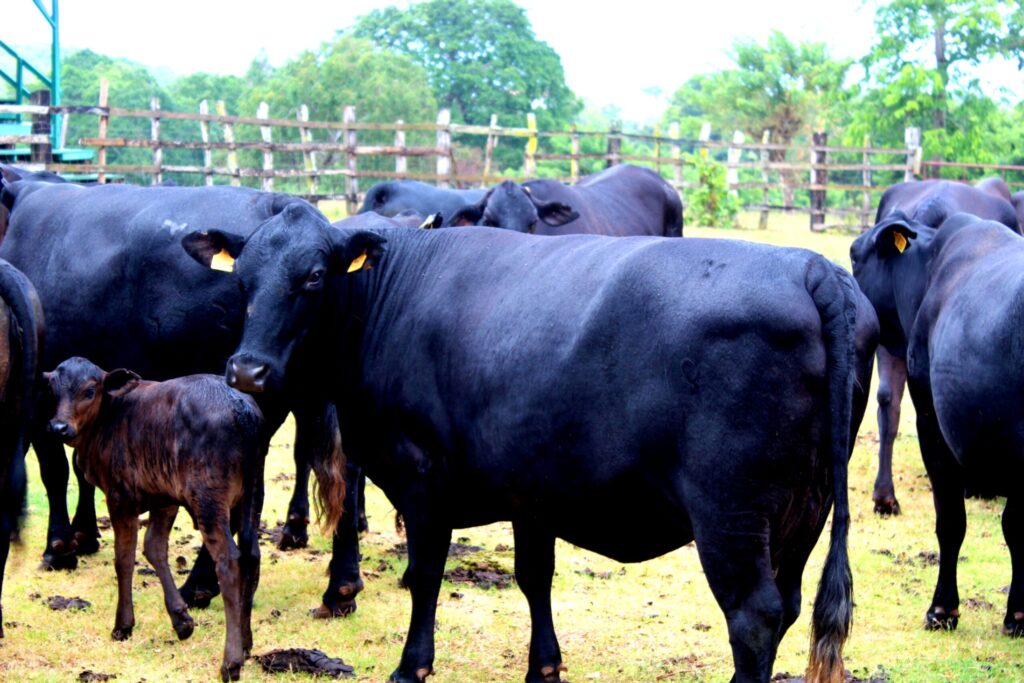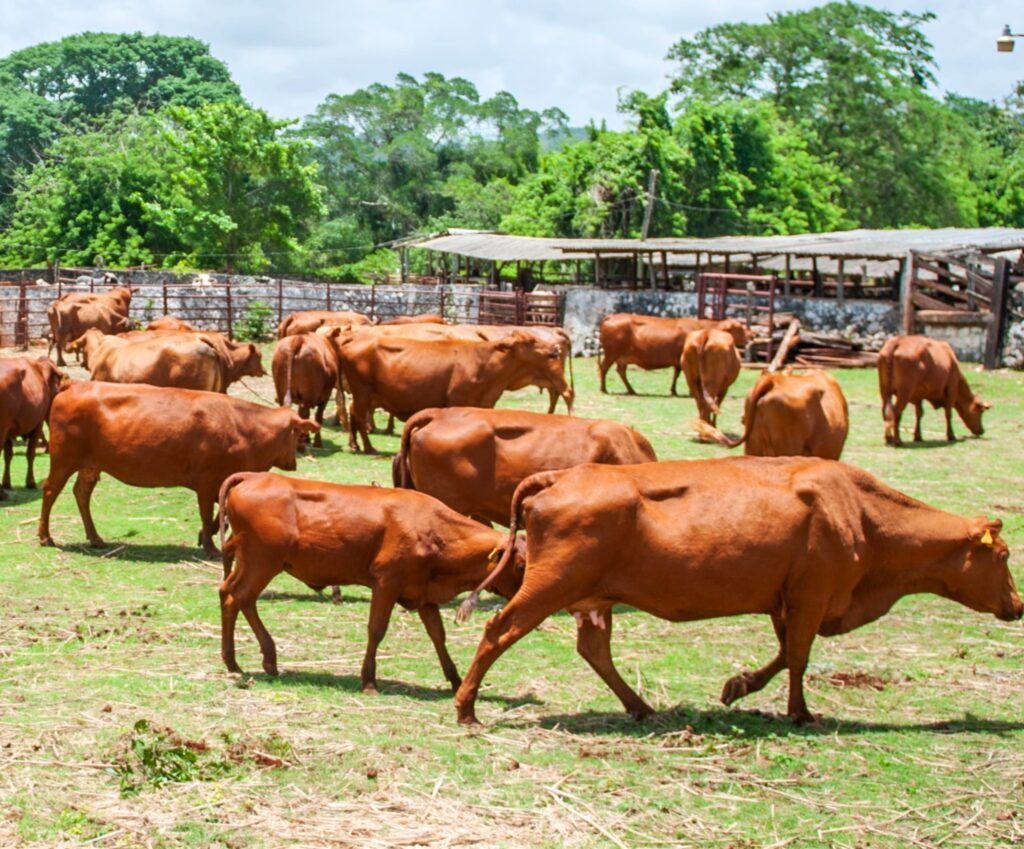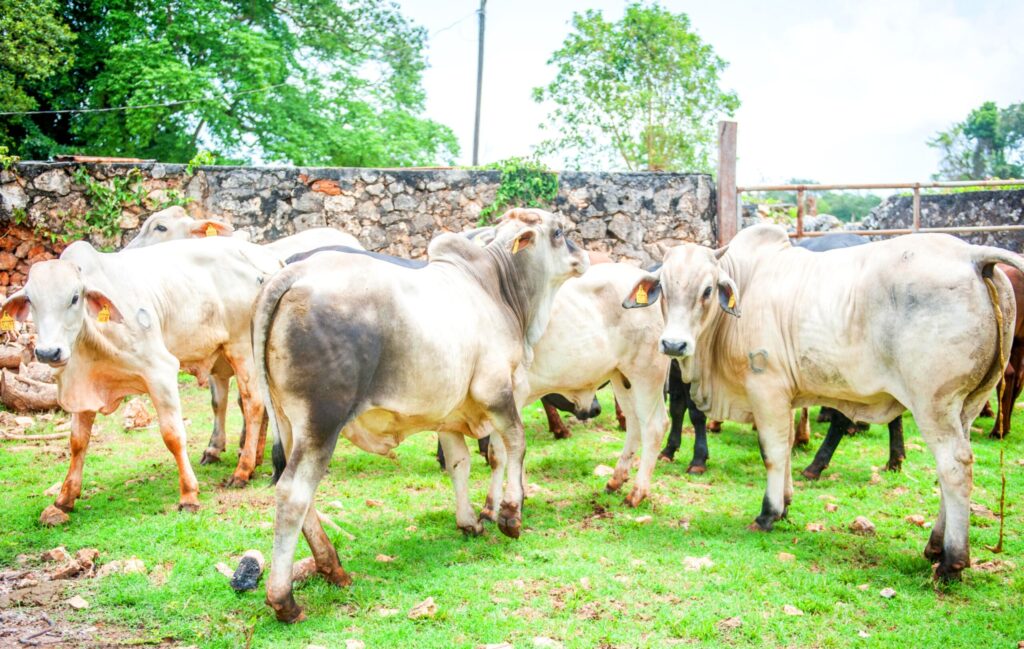OUR MINARD ESTATE’S HISTORY
Minard Estates Farm in Brown’s Town St. Ann is the genetic bank for the three local beef cattle breeds: The Jamaica Red Poll, Jamaica Black and Jamaica Brahman. The Agro-Investment Corporation envisions a centre of excellence that conserves and develops the breeds through continuous genetic improvement (the addition of new genetics through artificial insemination (AI), embryo transfer (ET), loan bull and bull/cow purchase) and the dissemination of seed stock (weaners, heifers and young bulls).
As a purebred enterprise, Minard Estates Farm primarily sells registered/registerable weaners and young bulls annually. To animals for sale, the cows/heifers are exposed to bulls in single sire herds for three (3) months beginning April each year or bred via artificial insemination (AI). Forty-five to sixty (45-60) days following the end of the breeding season cows are pregnancy checked with the desired conception rate being eighty (80) percent or greater. The following year January and beyond the calves from this breeding are born with weaning commencing in November that same year. Thereafter weaners are analysed, replacements are held, and the excess sold. Replacement bulls are placed a one hundred and forty (140) days gain test for further evaluation and are normally appraised before a final decision is taken to retain individuals as future sires. While the replacement heifers are developed on pastures for further evaluation and following appraisal a final decision is taken whether individuals will enter the breeding herd.
Also, to showcase the quality stock present on the farm, exemplary individuals are displayed four (4) times per year at agriculture shows with The Denbigh Agricultural Show being the most competitive. Finally, to support the herds pastures are recovered, maintained and re-established to ensure the availability of adequate nutritious forage.
The Minard and New Hope Estates were among the earliest estates to be established in Brown’s Town, St. Ann. The estates became renowned in Jamaica because of the work of Dr. Thomas Lecky. He was responsible for developing four (4) breeds of Cattle for the Jamaican farmers. His work in this regard brought Minard Estate and by extension Jamaica to the attention of the world.
Minard Estate was a farm primarily used for grazing cattle. It also produced coffee and pimento. By 1882 this estate and the New Hope Estate comprised 1,794 acres of which 506 acres were in Guinea Grass, 1,144 acres in common pasture and pimento and another 150 acres in wood and ruinate.
The property has two great houses, The Minard and New Hope Great Houses. Minard Great House, regarded as a fine example of early 18th century Jamaican Architecture was destroyed by fire in 1997. Originally, the building had two story comprising of cut stone and plaster construction. Today, the upper level no longer stands, and the ground floor of the Great House remains in ruins. Vegetation has taken over a great portion of the ground floor’s cut stone construction and is currently holding the structure together in some areas. The New Hope Great House is constructed of cut stone and is of a typical Georgian architectural style (1714-1837). Simplicity in construction was achieved through a basic rectangular design, repetition of floor area on levels, symmetrical axis and a hip roof.
Much has changed at the Minard and New Hope Estates over the years, but its significance has remained as an important agricultural site. It is still used for rearing and breeding of beef cattle, and the annual staging of the Minard Livestock Show and Beef Festival; with the Great Houses being a reminder of era when the plantocracy ruled supreme.

Jamaican Black 
Jamaica Red Poll 
Jamaica Brahman